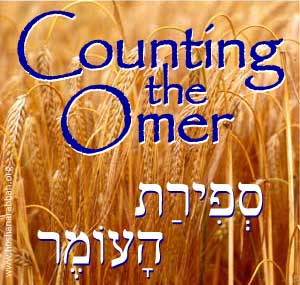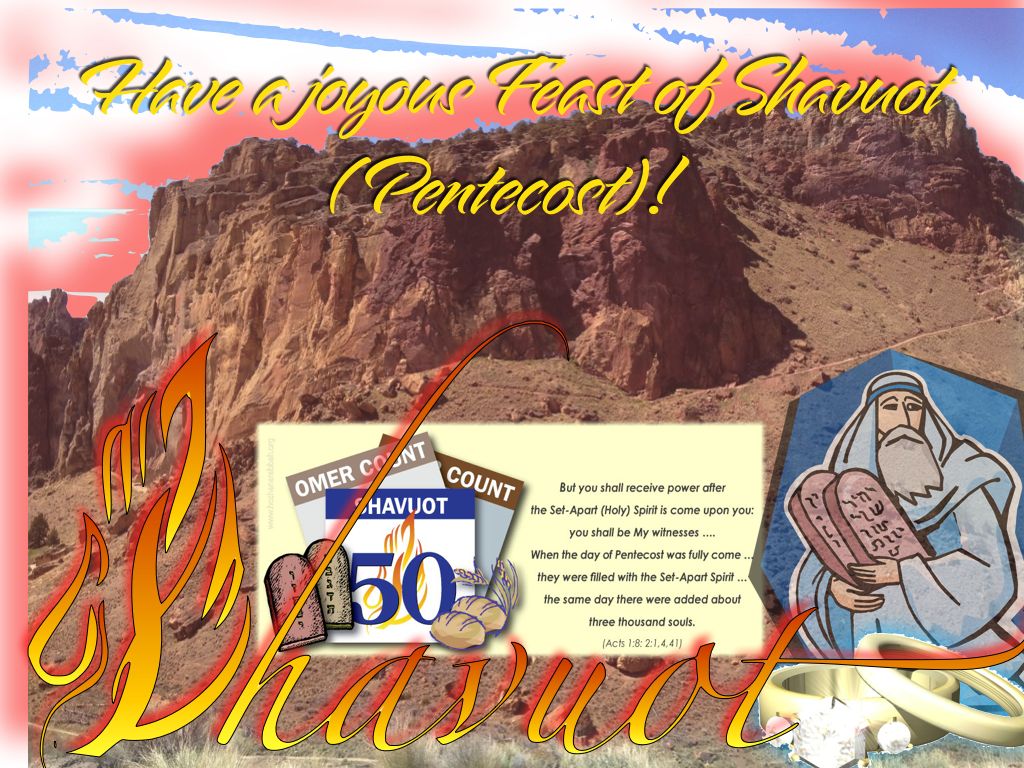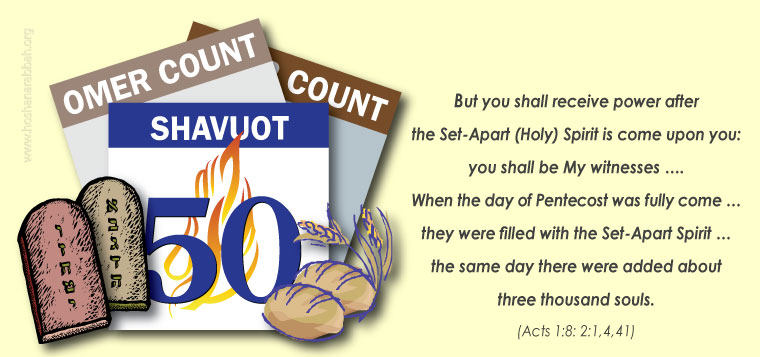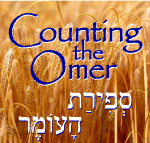It’s a biblical command:
And you shall count for yourselves from the day after the Sabbath, from the day that you brought the sheaf of the wave offering: seven Sabbaths shall be completed. Count fifty days to the day after the seventh Sabbath; then you shall offer a new grain offering to YHVH. (Lev 23:15–16)
Other than the fact that YHVH commands us to do so, why do we count the omer each day as we count down 49 days or seven weeks to the Feast of Weeks (Heb. Shavuot) or Pentecost? What can we learn from fulfilling this command?
- We are counting down with excitement and anticipation the 49 days until Shavuot, which is the anniversary of our forefathers receiving YHVH’s instructions in righteousness (the Torah) at Mount Sinai. For us, it’s like experiencing the joy of receiving the Torah all over again for the first time.
- We are counting down with excitement and anticipation the 49 days until Shavuot, which is the anniversary of our forefathers receiving YHVH’s instructions in righteousness (the Torah) at Mount Sinai. For us, it’s like experiencing the joy of receiving the Torah all over again for the first time.
Each person individually is to participate in the counting of the omer, since the Torah commands us to “count for yourselves” (Lev 23:15). This teaches us that each individual is to count down with anticipation the days toward Shavuot — the anniversary of the day that YHVH gave his Torah to Israel. Each person should be excited about receiving the Torah — YHVH’s divine instructions on how to live abundantly both physically and spiritually. YHVH gave his people 49 days to prepare themselves to meet him on this momentous occasion. The children of Israel met YHVH at Mount Sinai and were given the Torah, and the early book of Acts believers met YHVH in the upper room on the day of Pentecost when they received the Holy Spirit and had YHVH’s Torah written on their hearts. We celebrate this anniversary each year when we count the omer. This further teaches us that as the counting of the omer is an individual experience, even so, obedience to the Torah is an individual experience. Each of us must obey YHVH’s commandments, and YHVH will eventually judge each of us individually on how obedient we were in keeping his laws, which will determine our level of rewards in his kingdom (Matt 5:19; 16:27; Rev 22:12).
- We are counting down with anticipation seven weeks until Shavuot, which is the anniversary of the disciples of Yeshua receiving the power of the Holy Spirit (Heb. Ruach HaKodesh) on the day of Pentecost in Jerusalem. On this day, the Torah was written on their hearts thus empowering them to love Elohim and one’s fellow man more fully by keeping his Torah commands both in the letter and in the spirit (heart and mind).
- We are counting the omer in anticipation of the late spring wheat harvest in the land of Israel, which occurs at Shavuot. Most of us aren’t wheat farmers, but there’s still a spiritual lesson to be learned from this. The wheat harvest is a picture of the spiritual harvest of souls during this age, and our need to be filled with the Holy Spirit and equipped with its powerful gifts to more effectively reach out to those around us with the message of the gospel and the kingdom of Elohim. Yeshua has commissioned us to help bring that spiritual harvest of people into his kingdom.
- The counting of the omer is about spiritual refinement. When the children of Israel were enslaved in Egypt, they became defiled with the ways of that pagan nation. At Shavuot, the Israelites become a holy nation before YHVH and become the bride of YHVH in a spiritual sense. On Passover, the Israelites came under the blood of the lamb, which is a picture of their sins being cleansed by Yeshua, the Lamb of Elohim. This was accompanied by their putting leaven out of their homes, which is a biblical metaphor for sin — something we must put out of our lives. On the next day, the first day of the Feast of Unleavened Bread, they left Egypt — called the Exodus. This is a picture of leaving the world and sin behind as we set out on a journey to meet Elohim and to become his holy and righteous people. It’s about going from spiritual slavery to sin, the devil and this world to become Elohim’s chosen people.
Here is the blessing for the counting of the omer:
Baruch atah A-donai E-loheinu Melekh Ha-olam asher kid’shanu b’mitzvotav v’tzivanu al S’firat Ha-omer.
Blessed are You, Lord our God, King of the Universe, Who has sanctified us with His commandments and commanded us to count the Omer.
To help you count the omer, print off a monthly calendar that conveniently has each day of the omer count listed on it. Go to http://hoshanarabbah.org/calendars.html






